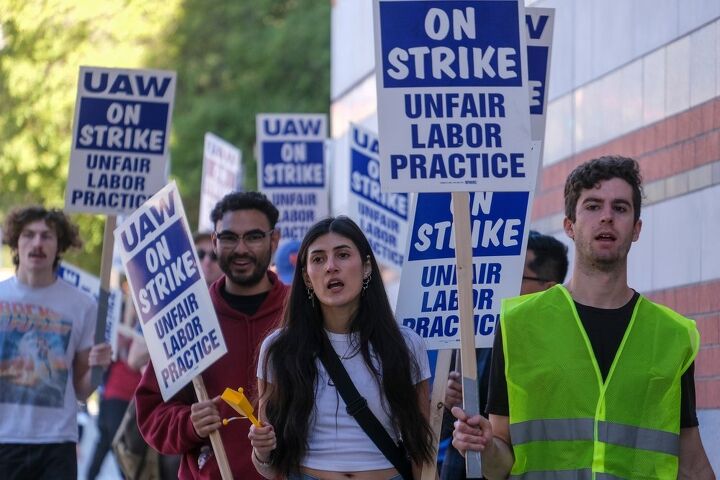
The United Auto Workers (UAW) has decided to broaden its strike on Friday. This week’s targets include Ford’s Chicago Assembly Plant, responsible for the Explorer and Lincoln Aviator, and General Motors’ Lansing Delta Township Assembly, responsible for the Chevrolet Traverse and Buick Enclave.
Stellantis managed to dodge the bullet this time around, with union leadership citing progress made in contract negotiations. It seems the union liked what the automaker had to say regarding the right to strike over plant closures and cost-of-living adjustments. Ford managed to achieve something similar last week. But with the UAW hoping to pit the companies against each other by subjecting them all to strikes, it was inevitable that Blue Oval would be back under union scrutiny.
“We are excited about this momentum at Stellantis and hope it continues,” stated UAW President Shawn Fain.
Fain said about 7,000 employees would be taking part in the latest round of work stoppages, joining roughly 18,300 workers who are currently on strike for the union. Last week, the UAW expanded its strike to 38 parts and distribution locations owned by GM and Stellantis. The plan has been to gradually turn up the heat on the industry, allowing the union to stretch its strike budget a little further while drawing media attention to its demands. By incorporating all three Detroit automakers, something previous eras of union leadership opted against, the UAW is also hoping to play them off each other as contract negotiations continue.
While Friday’s talks were said to be frantic, with the union claiming a lot of last-minute chatter coming from the industry, the plan was to have the 7,000 employees working in Chicago and Lansing walk off at noon if no deal had been reached.
Though automakers have issued public complaints that the union has been slow to respond to updated proposals. They’re also not particularly keen on the UAW’s updated tactics. Last week, CNBC reported that the industry was “questioning” the union’s strike motives after messages were leaked from UAW communications director Jonah Furman claiming that the union was causing “recurring reputations damage and operational chaos.”
Automakers, supported by corporate media, attempted to frame the above as scandalous — even though these have been the tactics of unionized labor for over a century.
“It’s now clear that the UAW leadership has always intended to cause months-long disruption, regardless of the harm it causes to its members and their communities,” General Motors said in an emailed statement to CNBC. “The leaked information calls into question who is actually in charge of UAW strategy and shows a callous disregard for the seriousness of what is at stake.”
Stellantis called the above “incredibly disturbing” and claimed it indicated that the “UAW’s approach to these talks is not in the best interest of the workforce.”
“We are disappointed that it appears our employees are being used as pawns in an agenda that is not intended to meet their needs,” Stellantis stated.
I suppose some of the allegations that the union is perpetually available to continue in good-faith negotiations could stick if the UAW has indeed been slow to respond with counter-proposals. But this is how the game has always been played by both sides. The whole thing is an optics war with each group hoping to win the hearts and minds of the American people before the other side blinks.
But that could take a while, as the UAW has made some big demands.
We’ve covered them before. However, the most important items likely include a 40-percent pay increase over the next four years (the same pay bump industry CEOs have enjoyed. This demand was later walked back to 36 percent), the restoration of traditional pensions, cost-of-living adjustments, and the elimination of compensation tiers that keep newer hires from being treated as fully fledged employees.
Much of the above stems from how much was given up during previous rounds of bargaining. Today’s union leaders are hoping to move away from the corruption of their predecessors and win back some of the concessions workers made over the last several decades. The worst of this took place in the run-up to the 2008 automotive bailout when the industry was financially crippled and laying off employees in large numbers.
While layoffs have also been relatively common over the last few years, industry finances are comparatively healthy. Even as production volumes plunged and news broke that the average American household could no longer afford to purchase brand-new vehicles, domestic automakers and dealerships enjoyed extremely high levels of profitability. The phenomenon has been something the UAW has brought up repeatedly as it hopes to garner public support.
[Image: UAW]
Become a TTAC insider. Get the latest news, features, TTAC takes, and everything else that gets to the truth about cars first by subscribing to our newsletter.
via Autobuzz Today
Comments
Post a Comment